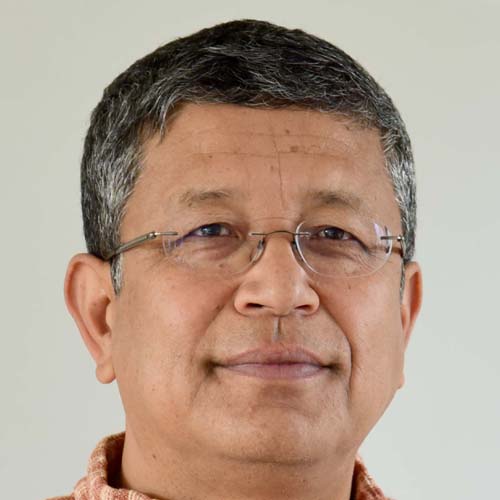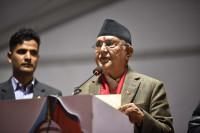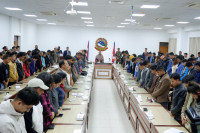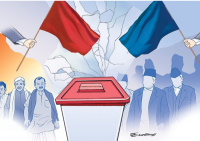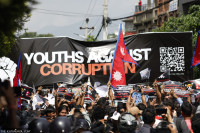Opinion
Caste in doubt
If the struggle is for the rights of everyone, how can that ‘everyone’ not include Dalits?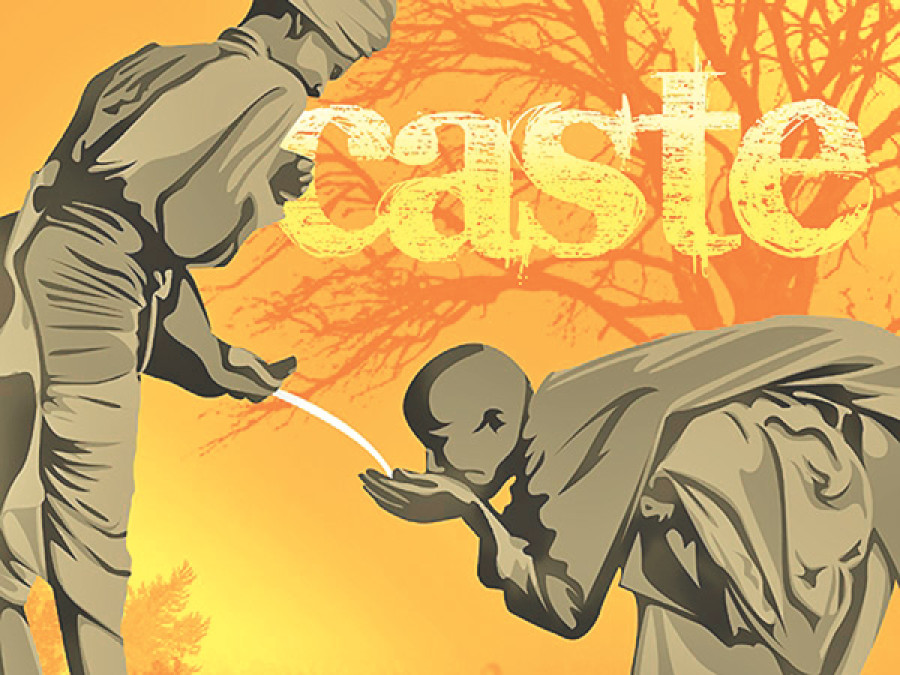
Deepak Thapa
The constitution amendment proposal has finally been introduced in the legislature-parliament. With that, the government has made good on the assurances given by the top leaders in the run-up to its promulgation that the constitution is a ‘living document’ and by definition subject to change. Unfortunately, rather than viewing this development as a step forward, the country is torn between heaving a sigh of relief and bracing for agitations to break out and disrupt everyday life across the country.
No one appears ready to wholeheartedly embrace the proposed amendments, with dissenting voices as loud within the ruling coalition as well. We were even treated to the incongruous sight of the CPN-UML Chairman, KP Oli, being lectured at by Kamal Thapa, head of the newly regrouped Pancha rightists, and urged to display a bit less rigidity for the sake of getting the nation out of this impasse. The counterpoint to the UML position that the amendments go too far is Upendra Yadav’s that they fall far short. How and when the twain will meet, if ever, is something we will have to suffer through.
Caught between these two contrasting stances are the Madhes-based parties, who seem quite prepared for some kind of honourable resolution. But they appear to be in a bind about how they should deal with Upendra Yadav. The proposed amendments are largely aimed at addressing demands emanating from Madhesi groups, while Yadav has now broadened his party base to also include others, mainly Janajatis. It is but to be expected that he would push for a much broader amendment package. As the statement he put out together with Baburam Bhattarai puts it: ‘Constitutional amendment has to end discrimination on the basis of class, caste/ethnicity, gender, language, culture, religion and geography.’
The content of the statement sounds remarkably similar to those that we have heard from the Maoists for a long time, and not surprising at all given that the two signatories are both former Maoists. But it also amazing how the statement echoes what the UML once stood for. In August 1989, on the eve of forming the United Left Front, in its then avatar as the underground CPN-ML, the party had demanded an end to the hegemony of one religion and also an end to the hegemony of caste, language and culture and the right to education in the mother tongue. Like everything else, parties also evolve.
Oppressed many times over
The political change of 2006 resulted in what proved to be a momentary heyday of the uplifting idea of building an inclusive society. Articulated in numerous statutory and policy documents, that emancipatory sentiment has been greatly expanded in recent years to consist of, in Yadav and Bhattarai’s language, ‘Madhesi, Tharu, Adivasi Janajati, Khas, Muslim, Shilpi (Dalit), oppressed, marginalised and minority communities and backward areas’. The other notable feature over time is that while there has been some amount of resentment at groups like Madhesis and Janajatis being granted favoured status, a near-consensus exists on the need to provide special support to Dalits. Yet, that is where both state and society have failed quite badly.
Apart from the 2011 Caste Based Discrimination and Untouchability (Offence and Punishment) Act, which made discrimination on the basis of caste a criminal offence, the few Dalits who were able to take advantage of the quota system in government service, and those who were included in local bodies and community groups, the experience of being a Dalit has changed little for this large mass of people. A 2011 study, Access to Security, Justice & Rule of Law in Nepal, cites a survey which found that of the 7,170 respondents (from a sample of 11,909) who said they had been discriminated against, Dalits constituted an astounding 85 percent. Of the legal regime, it gives the example of women from the Dom community of Madhesi Dalits who complained that the police do not apply the laws meant for their protection. Unsurprisingly, the study’s conclusion was that there is ‘[a]ctive discrimination against Dalits across the Criminal Justice system’.
There is no reason to believe that the ground situation has changed in the five years since that study. One example will suffice. During the recent festival of Chhath, in which ponds and rivers play a crucial role, Dalits from a Siraha village were barred from using the village pond and the worshipping platform they had set up in the section that used to be traditionally set aside for them was also torn down. Leave aside the injustice of it all, since the annual cleaning of the pond for Chhath had been done by the same village Dalits. Imagine the sense of hurt for the Dalit group to dig a hole in the ground and fill it with water to stand in for the pond. It brought to mind what Mahatma Gandhi had written while explaining his campaign to open temples to Dalits: ‘Deprive a Hindu of his temple, and you deprive him of the thing he generally prizes most in life.’
From what was reported in the media, that was retaliatory punishment for the attention that had been drawn to the village last year. After seeing first-hand how the Dalits there were being barred from using the village well, the popular Nepali actor Rajesh Hamal had been moved to remark: ‘For the first time in life I feel ashamed of being a Nepali.’
Party failings
Certainly, these are common occurrences and they do not always generate the publicity that comes with a film star taking umbrage at how his fellow citizens are treated. The last we heard about the Chhath incident was that the National Human Rights Commission (NHRC) had begun an investigation and as with most such
Dalit-non-Dalit altercations, the final outcome is likely to be no more than an undertaking by the non-Dalits not to repeat such atrocities in the future. But we all know that will continue, if more subtly.
What was also astounding was that with the NHRC involved, everyone assumed they were absolved of their responsibilities. I do not remember a single political party—neither those based in the Tarai nor the pan-Nepal ones—utter a squeak of condemnation, let alone actively engage with the misguided perpetrators. Upendra Yadav did not speak out in solidarity nor did his co-leader, Ashok Rai. Nor for that matter did Mahanta Thakur or Rajendra Mahato or that much-publicised guest of a Dalit household, Baburam Bhattarai. The double standards of rights-based movements such as those led by Madhesis and Janajatis or of parties such as the Maoist Centre and Naya Shakti not being able to notice what is happening right beneath their nose is nothing less than shameful. If the struggle is for the rights of everyone, how can that ‘everyone’ not include Dalits?
For politicians, all the rhetoric about ending caste discrimination still appears to be just that—empty rhetoric. They seem not to have grasped the fundamental truth that, paraphrasing John Donne, any man’s humiliation diminishes me, because I am involved in mankind. It also reminds me of what the late Dalit activist, Suvash Darnal, used to say: When politicians talk about the rights for Dalits, Madhesis, Janajatis and women (the Nepali initials of which form the alliterative ‘da-ma-ja-ma’), all they are trying to ensure is that they have all the correct alphabets in place. The alphabet soup has become longer, but attitudes remain the same.




 20.12°C Kathmandu
20.12°C Kathmandu